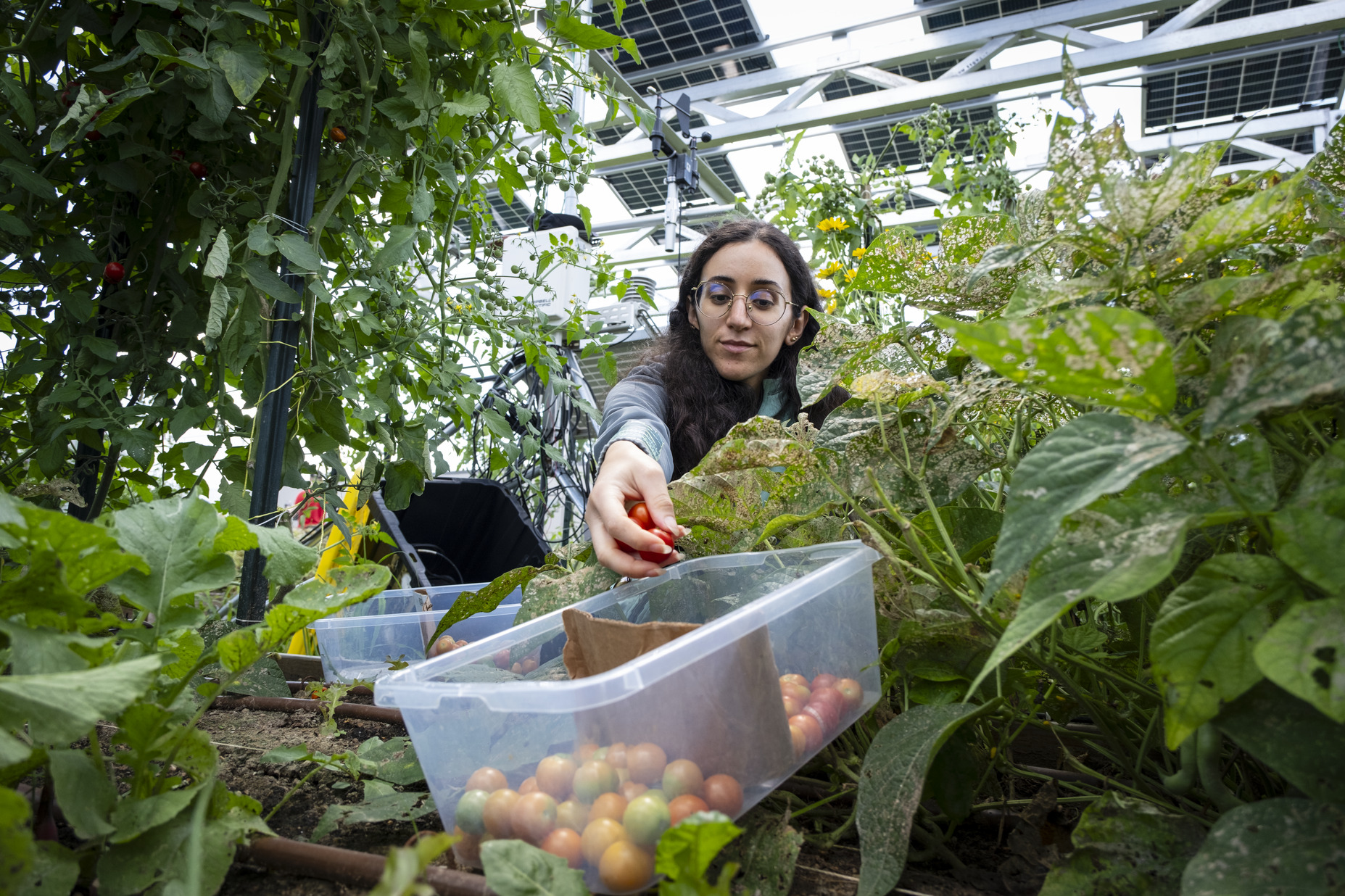The comprehensive agrivoltaics study is published in prestigious Nature Sustainability journal—“a mark of excellence in the field of sustainability research." Access the cover story here.
Multi-use solar, the practice of combining solar energy production with agriculture (agrivoltaics) or natural vegetation (ecovoltaics), is developing rapidly around the world. A new research study offers a comprehensive review of the many site-specific challenges—microclimates, soil conditions, local economic impacts and stakeholder perspectives—that can influence agricultural production in the face of climate change and increasing land-water limitations.
According to lead author Caroline Merheb, a Temple University doctoral student in geoscience, the study combed through years of quantitative and qualitative data from previous agrivoltaics/solar photovoltaics research. The goal of “Synergies and trade-offs of multi-use solar landscapes” was to search for trends, such as increases in energy/food productivity; highlight the benefits agrivoltaics have over separate systems for solar and food production; and identify challenges to collocation scenarios and what could be done to improve the integration of these systems.
“I was captured by the trends of microclimate and productivity data that showed an improvement with the increase in ambient temperature,” explained Merheb, “reflecting the potential for collocation scenarios to protect the environment and productivity of both food and energy in the face of future heat intensification due to the effects of climate change.”
Temple continues to lead the advancement of agrivoltaics through a field site at Temple Ambler, international collaborations around the world, including India, Indonesia and Nepal, a strong focus on education and outreach and impactful research.
“Nature Sustainability is one of the most influential platforms for interdisciplinary work that advances understanding of the complex interactions between natural, social, and technological systems, with a focus on addressing global sustainability challenges and informing policy. Publishing a data synthesis review paper there is relatively rare and extremely difficult,” said Sujith Ravi, an associate professor in the Department of Earth and Environmental Science and Merheb’s faculty advisor. “It’s a mark of excellence in the field of sustainability research. Articles there shape not only academic thinking but also policy and practice, making it a highly respected and sought-after venue for leading scientists and experts worldwide.”
Merheb’s work, in both the Nature Sustainability paper and in upcoming ones that highlight the Ambler Campus site, explores the benefits of agrivoltaics in urban systems, a perspective that is not well recognized in previous research.
“I hope this work will help policy makers to make laws that can help farmers expand their income sources while at the same time preserving agriculture, the environment and land,” said Merheb. “I also hope it will inspire researchers to apply agrivoltaics in scenarios other than traditional agriculture while expanding the model by incorporating how water, energy and food production are interconnected and interdependent.”
Additional authors on the Nature Sustainability paper are Nicholas Davatzes, chair of the EES Department, and Jordan Macknick, lead energy-water-land analyst for the U.S. Department of Energy's National Renewable Energy Laboratory. Read the paper here.

